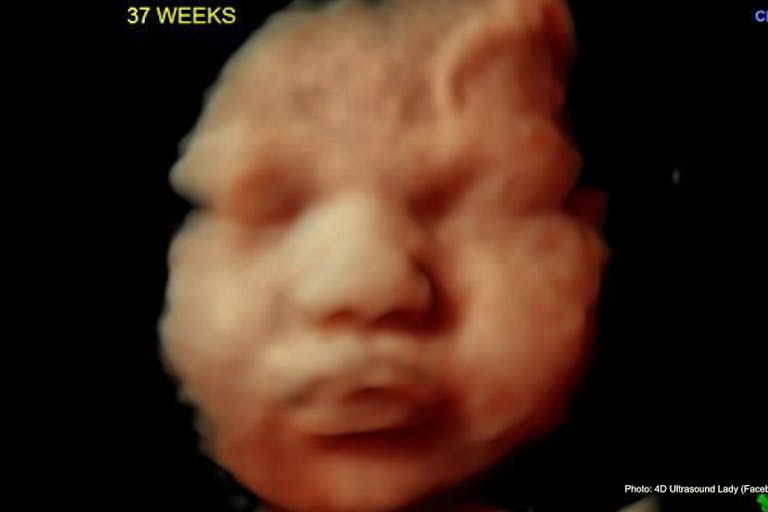
Prosecutors drop charges against Polish doctor who aborted baby in ninth month
Nancy Flanders
·
Why Stephanie Gray’s argument is wrong (and misguided)
Upset over a recent article that argued in favor of limiting the use of graphic abortion images, Stephanie Gray criticized the article’s writer, Kristen Walker, as “gravely misguided.” Gray is wrong.
Gray claimed her criticism is based on evidence. In fact, it’s based on a logical fallacy. Gray wrote, “Within the pro-life movement, there should be one, and only one, fundamental principal guiding the choices we make about activism, and that is effectiveness.” She added, “There is simply no denying the effectiveness of graphic images in saving lives. Period.”
Here’s the problem. For the sake of argument, let’s accept Gray’s point that graphic images save lives. Nevertheless, the “effective” fundamental principle guiding the choices we make is the one that saves the most lives. And changing the law is far more effective at saving lives than showing graphic images.
Of course, the pro-life movement is not, and should not be, one-dimensional. And while changing the law is highly important, so is sidewalk counseling, and public education, of which Gray is a leader.
But Walker’s main point was that graphic abortion images turn people against the pro-life movement, and therefore are counterproductive when used incorrectly.
Here’s the issue. The Supreme Court justices decide abortion law. The president and senators, respectively, nominate and confirm the justices. The public votes for the president and senators. And presidents and senators win elections, in large part, by stirring the public’s emotions.
Now, it’s a fact that graphic abortion images stir negative emotions. So how many people, after seeing graphic abortion images in public places, have closed their minds to the pro-life message, and therefore also to pro-life politicians? And how many people have then voted only for pro-abortion politicians, or just stayed home? In other words, is the number of people who have voted only for pro-abortion politicians, in whole or in part because of graphic abortion images, higher than the number of people who have converted to the pro-life position, in whole or in part, because of graphic abortion images? This is the most important guide for determining whether or not these images are detrimental.
Article continues below
Dear Reader,
In 2026, Live Action is heading straight where the battle is fiercest: college campuses.
We have a bold initiative to establish 100 Live Action campus chapters within the next year, and your partnership will make it a success!
Your support today will help train and equip young leaders, bring Live Action’s educational content into academic environments, host on-campus events and debates, and empower students to challenge the pro-abortion status quo with truth and compassion.
Invest in pro-life grassroots outreach and cultural formation with your DOUBLED year-end gift!
Yet Gray failed to mention the law, the judicial system, or the political process in her article. Addressing this issue, she wrote, “The question is not do graphic images save lives (they do), but rather, do they turn people off in such a way as to be detrimental to the movement? And anyone still asking that latter question needs to re-read what I’ve written so far.”
Well, I did re-read what Gray wrote. And it was just as empty of substance on this issue the second time around. Continuing with this line of reasoning, Gray added, “Now, is it possible that some women will see the abortion images and not change their minds? Of course. But no woman sees the images and decides to have an abortion because of them.”
True. But irrelevant. Gray’s entire criticism of Walker is based on a false assumption. As explained above, if a percentage of the public refuses to even consider voting for pro-life politicians because their minds have been closed after seeing graphic abortion images in public places, well, then, at the very least, the effectiveness of showing these images in public places is a legitimate topic in need of debate. Gray utterly failed to address this issue, let alone refute it.
Overall, Gray did make a few solid points in favor of showing graphic abortion images in public places.
However, Gray’s argument is flawed. Consider the following. Time after time, pro-abortion proponents criticize the pro-life position without once mentioning the reason for the pro-life position: abortion is the intentional killing of innocent human life. Gray makes a similar error by criticizing Walker’s position without once mentioning the reason for that position: the effect that graphic abortion images have in shaping the law, the judicial system, and the political process.
What do you call it when somebody makes such an error? Oh, yeah. Misguided.
Live Action News is pro-life news and commentary from a pro-life perspective.
Contact editor@liveaction.org for questions, corrections, or if you are seeking permission to reprint any Live Action News content.
Guest Articles: To submit a guest article to Live Action News, email editor@liveaction.org with an attached Word document of 800-1000 words. Please also attach any photos relevant to your submission if applicable. If your submission is accepted for publication, you will be notified within three weeks. Guest articles are not compensated (see our Open License Agreement). Thank you for your interest in Live Action News!

Nancy Flanders
·
Issues
Angeline Tan
·
Guest Column
Emily Berning
·
Opinion
Nancy Flanders
·
Opinion
Mark Wiltz
·
Opinion
Mark Wiltz
·
Media
Paul Pauker
·
Analysis
Paul Pauker
·
Opinion
Paul Pauker
·
Media
Paul Pauker
·
Analysis
Paul Pauker
·